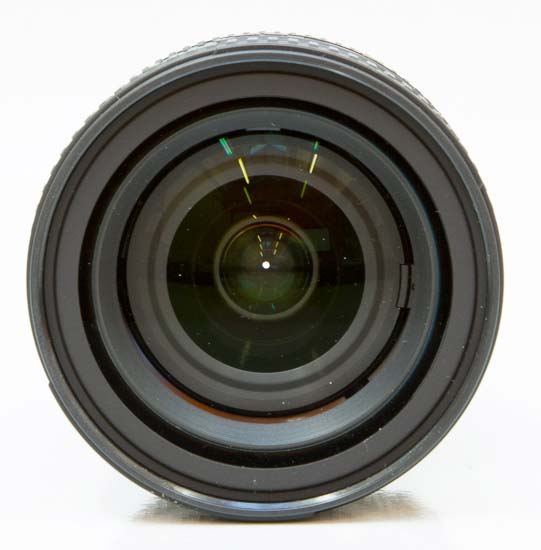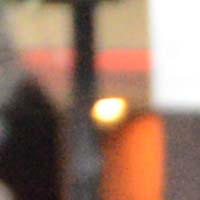Nikon AF-S Nikkor 24-85mm f/3.5-4.5G ED VR Review

Introduction
The Nikon AF-S Nikkor 24-85mm f/3.5-4.5G ED VR is a new FX-format zoom lens. Weighing in at 465 grams, the Nikon AF-S Nikkor 24-85mm f/3.5-4.5G ED VR features an inner focusing mechanism, with autofocus controlled by a Silent Wave Motor (SWM). The optical formula comprises 16 elements in 11 groups, including 1 ED and 3 aspherical lens elements. The minimum focus distance is 38cm from the focal plane at all focal lengths. Also featuring an iris diaphragm with 7 rounded blades for a pleasing bokeh, the AF-S Nikkor 24-85mm f/3.5-4.5G ED VR takes 72mm filters and comes with an HB-63 lens hood and a CL-1118 soft pouch as standard. The Nikon AF-S Nikkor 24-85mm f/3.5-4.5G ED VR lens is available now priced at around £520 in the UK and $600 in the USA.
Ease of Use
 The Nikon 24-85mm f/3.5-4.5 VR lens mounted to a Nikon D600 body
The Nikon 24-85mm f/3.5-4.5 VR lens mounted to a Nikon D600 body
Weighing 465g, the AF-S Nikkor 24-85mm f/3.5-4.5G ED VR is significantly lighter and more compact than most of Nikon's other pro-level standard zoom lenses. We found that it balanced well on the Nikon D600 body and proved to not be too much of a burden when used all day long.
 Front of Nikon 24-85mm f/3.5-4.5 VR, isometric view
Front of Nikon 24-85mm f/3.5-4.5 VR, isometric view
Build quality is similar to the majority of Nikon lenses we have tested so far. Most exterior parts are made of plastic, but that doesn't stop the lens from feeling solid and substantial in the hand.
 Front of Nikon 24-85mm f/3.5-4.5 VR, isometric view
Front of Nikon 24-85mm f/3.5-4.5 VR, isometric view
Zooming is not internal, with the front extending somewhat upon zooming to 110mm. The ribbed zoom ring is sufficiently wide and neither too stiff nor too loose. Zoom creep is not an issue. The lens accepts filters via a standard 72mm thread around the – non-rotating – front lens element, which is great news for those who like to use polarisers or ND grads. The Nikon 24-85mm f/3.5-4.5 VR ships with the HB-63 bayonet hood, but it wasn't provided to us for this review.
 The Nikon 24-85mm f/3.5-4.5 VR alongside the D600
The Nikon 24-85mm f/3.5-4.5 VR alongside the D600
In terms of features, the Nikon 24-85mm f/3.5-4.5 VR has quite a lot to offer. It has an internal focus (IF) mechanism and a Silent Wave Motor, allowing you to use manual focus even when you are in auto-focus mode (denoted with the usual M/A sign on the lens barrel). It also features Vibration Reduction (VR), which offers a generous 4-stops of compensation.
 Front of the Nikon 24-85mm f/3.5-4.5 VR
Front of the Nikon 24-85mm f/3.5-4.5 VR
There is a distance scale sheltered behind a window, but there are no depth-of-field marks and no infrared focus index either.
 Front of the Nikon 24-85mm f/3.5-4.5 VR
Front of the Nikon 24-85mm f/3.5-4.5 VR
 Front of the Nikon 24-85mm f/3.5-4.5 VR
Front of the Nikon 24-85mm f/3.5-4.5 VR
 Rear of the Nikon 24-85mm f/3.5-4.5 VR
Rear of the Nikon 24-85mm f/3.5-4.5 VR
 Isometric view of the Nikon 24-85mm f/3.5-4.5 VR
Isometric view of the Nikon 24-85mm f/3.5-4.5 VR
 The Nikon 24-85mm f/3.5-4.5 VR in-hand
The Nikon 24-85mm f/3.5-4.5 VR in-hand
The lens is not claimed to be weatherproof, but there is a rubber seal around the lens mount that should provide basic dust protection.
Focal Range
One of the main attractions of this lens is the versatile focal range that goes from ultra-wideangle to moderate telephoto.
At the 24mm end of the zoom range, the angle of view is 84°.
 Field of view at 24mm
Field of view at 24mm
At the 85mm end, the angle of view narrows to 28° 30'.
 Field of view at 85mm
Field of view at 85mm
Focusing
In Spot AF mode, the Nikon 24-85mm f/3.5-4.5 VR lens focuses fairly quickly but not instantly. Switch your camera to Continuous AF though, and you'll be surprised at how well it copes with fast-moving subjects. Thanks to a Silent Wave Motor, auto focus operation is very quiet, and instant manual-focus override is available at all times. The ridged focus ring is quite slim but is entirely adequate for the job. It requires an approximately 90° turn to get from the close-focus point to infinity. Note that there is no hard stop at either end of the range.
Distortion
A zoom lens that goes out to 24mm is bound to suffer from noticeable barrel distortion at the wide end, and the Nikon 24-85mm f/3.5-4.5 VR is certainly no exception.

The good news is that this barrelling rapidly decreases upon zooming in a little, becoming essentially imperceptible once you get past the 35mm mark. The bad news is that it quickly turns into heavy pin-cushioning, which you will easily notice at around 50mm at the latest. The pincushion distortion remains strong across the rest of the zoom range – the example below was taken at a focal length of 85mm.

Fortunately, both types of distortion are fairly easy to correct in post-processing.
Chromatic Aberrations
Chromatic aberrations, typically seen as purple or blue fringes along contrasty edges, can be noticed in photos taken at maximum aperture but they aren't too excessive, and tend to go away upon stopping down.
 |
 |
Light Fall-off
With the lens set to its maximum aperture, you can see some heavy light fall off in the corners at all focal lengths, and especially at the extremes of the zoom range (see the Distortion shots above for an example). Stopping down reduces the phenomenon, especially at the long end.
Macro
The Nikon 24-85mm f/3.5-4.5 VR lens has a close-focus point of 38cm throughout its zoom range (measured from the sensor plane rather than the front lens element). Nikon claims a maximum magnification of 0.22x at the telephoto end.
 Close-up performance
Close-up performance
Bokeh
Bokeh is a word used for the out-of-focus areas of a photograph, and is usually described in qualitative terms, such as smooth / creamy / harsh etc. In the Nikon 24-85mm f/3.5-4.5 VR lens, Nikon employed an iris diaphragm with 7 rounded blades for a more pleasing rendering of the out-of-focus areas – however, they succeeded only partially, as we have found the bokeh to be quite “nervous” at times.
 |
 |
 |
 |
Sharpness
In order to show you how sharp this lens is, we are providing 100% crops on the following pages.
